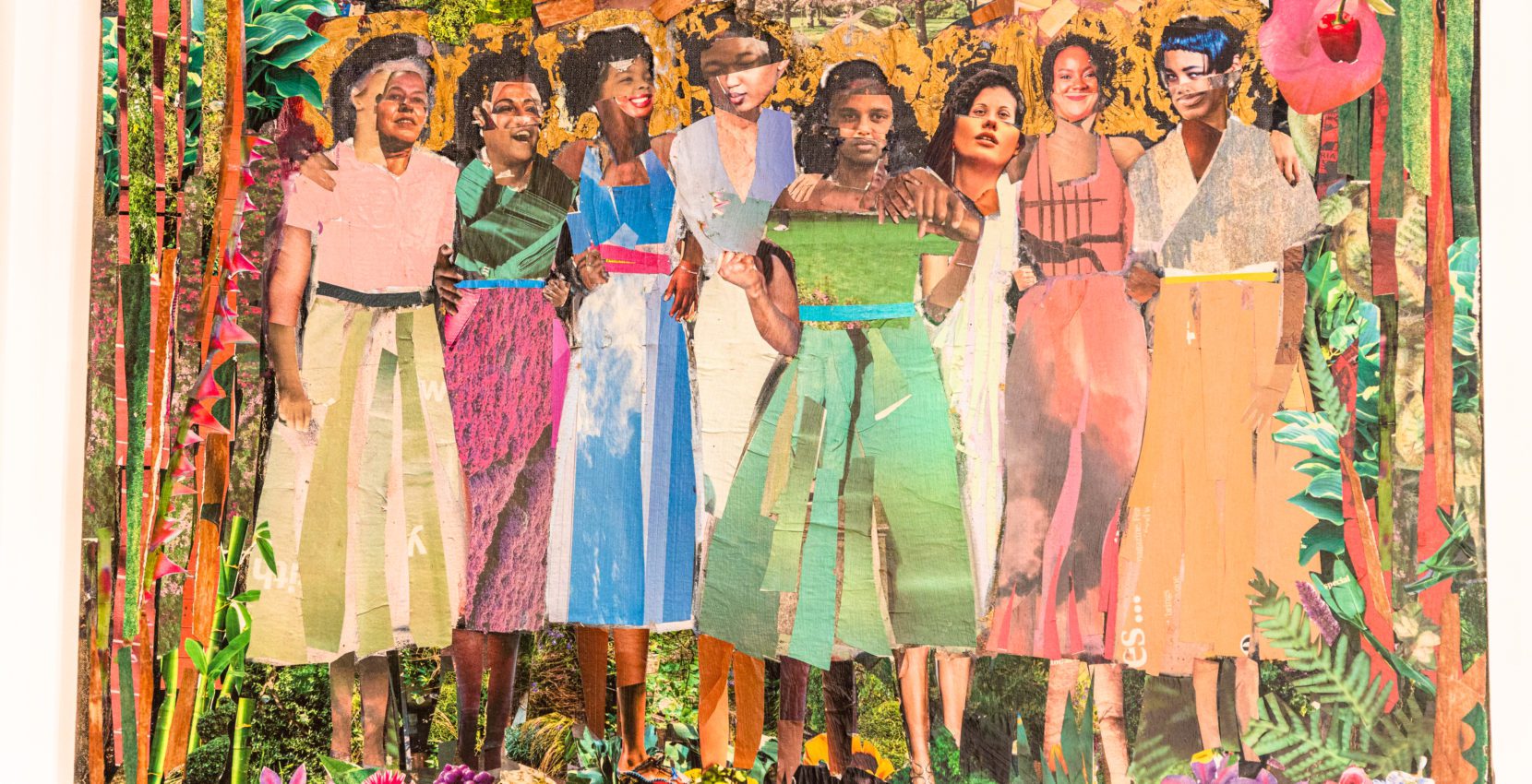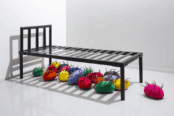Can museums comment on a culture? Given the murky history of ‘collection’ how does a contemporary museum stage a discussion encompassing a vast area as diverse as South Asia? It’s a bold move to attempt to collate the many cultures and dialects, legacies of colonialism and the experiences of British and South Asian people but Manchester Museum is attempting just that. But how? One answer might be by pushing the boundaries of conventional curatorial practice. But the spectral question floating above this activity is, why?
Closed for the past seventeen months the Manchester Museum has undergone a £15 million transformative renovation, inside and out. The cosmetic improvements aim to match changes in how the Victorian institution approaches its collections.
‘The South Asian gallery is part of the wider ‘hello future’ alliance, with the museum wanting to be more caring and imaginative and inclusive and I think we’ve really focused on those three themes. We decided it was going to be co-curated, because we wanted to make it inclusive with the communities that we serve. A lot of these voices have not traditionally been told in gallery spaces.’
Nusrat Ahmed is the Community Producer who has worked with a staggering 30 co-curators to develop the South Asia Gallery. These curators come from a variety of backgrounds – from educators to musicians. Together they take visitors on a journey through six anthologies: past & present; lived environments; science and innovation; sound, music, dance; British Asian; movement and empire. A combination of historical artefacts, art, and film meet visitors as they travel around the gallery.
‘I think the biggest story for the South Asia gallery is that co-curation story and the way that we’ve developed it. It’s not an approach that’s usually been taken by museums, well not at this scale. For me being part of this process for the last five years, why it’s worked is because it’s taken that time. And I feel that you need to have that time and space for a gallery like this to organically develop.
Co-curation involves a lot of things that I think you only kind of know if you’ve been on the journey. It’s about breaking down hierarchy and making everyone feel that they’re equal. It is definitely about including those people right at the beginning of the project, which is what this project did. It’s not co-curation if you bring them in halfway through and bridge gaps that you’ve obviously identified. It’s about remunerating everyone for their time, and everyone being as equal as the academic in the team. And it’s about giving them the skills to co-curate. So, if you’re asking a group of people to co-curate a gallery, they know nothing about gallery spaces. Before COVID hit, we did quite a lot of research visits with the British Museum, we did our own partners in Manchester, we got to see collections that were not on display. So it’s about equipping them with the right skills to then have choices of what they wanted to then put in the gallery.’

‘Breaking down hierarchy’ – the hierarchy of the professional curator, or the academic vision at the centre of stories – challenges the conventional way. 30 voices sounds like a scattergun approach that sacrifices vision for inclusion by volume, but if museums want to best represent those who they portray, through their artefacts and objects then including representative voices is key. If we want to decolonise these spaces then perhaps reappraising the original aim of museums to ‘present other cultures’ with a representative authenticity, allows us to enjoy these educational institutions for their accuracy, redressing somewhat the role of museums in the history of colonial practice.
But those links prevail and the South Asia Gallery shares a catalogue with the British Museum, an institution at the centre of the discussion on the future of museum collections and problematic acquisition.
‘With this group of people, we already talked about acquisitions and where objects have come from. On one of the research visits to the British Museum, it was the thing that was talked about. And a lot of the time, people said ‘we don’t want that’ rather than ‘we do want that’. So it wasn’t that they knew what they wanted, but… they wanted to know where an object came from. And the objects then that are on display, are the ones that collective members have decided would best tell their stories. Acquisition is a big thing, it’s something that we don’t want to shy away from. We talk about it through the text throughout the gallery. And the collective really made it clear that it’s one of the ongoing challenges that museums have. And they really wanted to highlight that.’
It is the aim that the engagement and collaborative process of the gallery continues for the life of the space. One of the most impressive design features – the central project space- will hold performances and workshops to involve new participants in the gallery’s progressive journey. The real achievement will be to see if this intention and ongoing collaborative process is able to be sustained when the space provided by the closure of the gallery for redevelopment is removed.

‘We know that the South Asia gallery will never be able to showcase the whole diversity of South Asia. Co-curation with this group will obviously only have people from a certain makeup. So we have a heavy Pakistani, Bangladeshi and Indian population in Manchester, and that’s what made up the first collective. What we’ll do post-opening is work with new pupils to bring in those new stories from those countries that we’ve not hit as well as just to make it a continuous collective co-curation gallery.
The gallery brings in the themes and threads and the stories that this group of collective wanted to share with visitors. We know that not the whole of South Asia, like I said, we could get the possibility and iteration. So we will continue to rotate parts of the displays to bring in those new stories.’
Manchester Museum Reopens to the public on the 18th of November 2023
Featured Image: ‘Are You Thinking What We’re Thinking?’, Michelle Olivier, 2018.

Ruth O’Sullivan is a writer and curator. Her work explores the impact of digital technologies on contemporary art practices and challenging gender disparity within the visual arts.






















